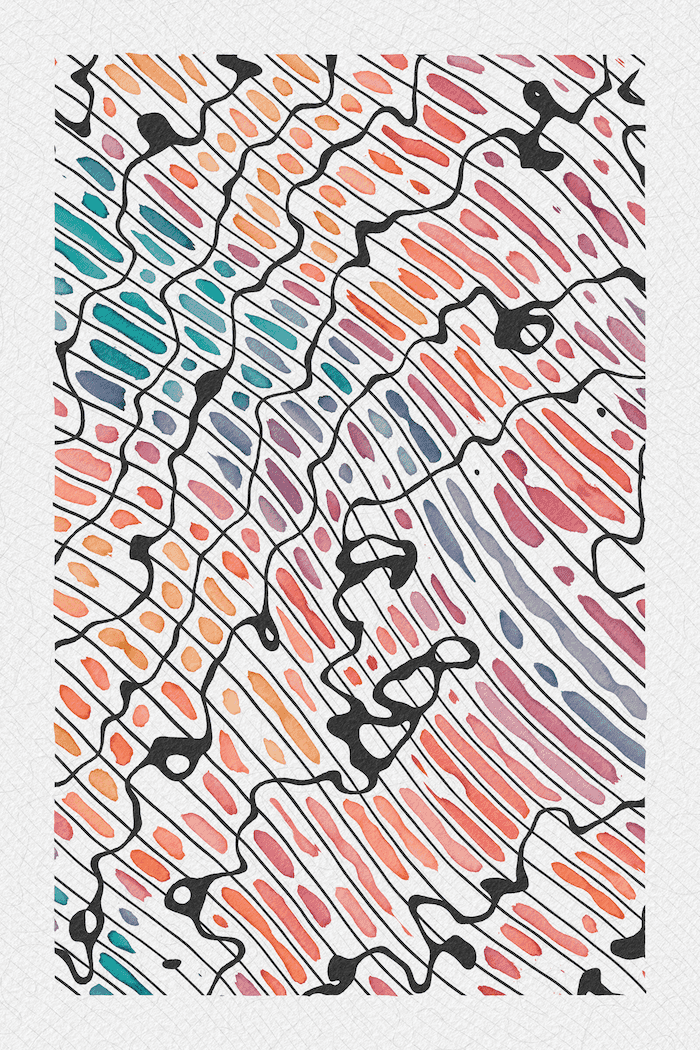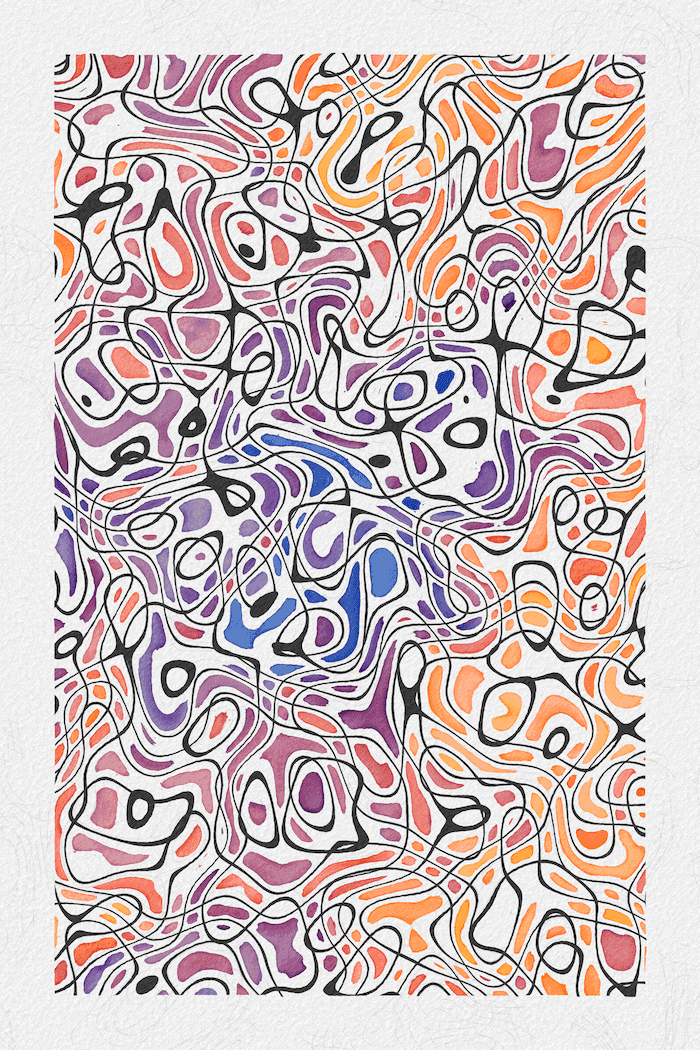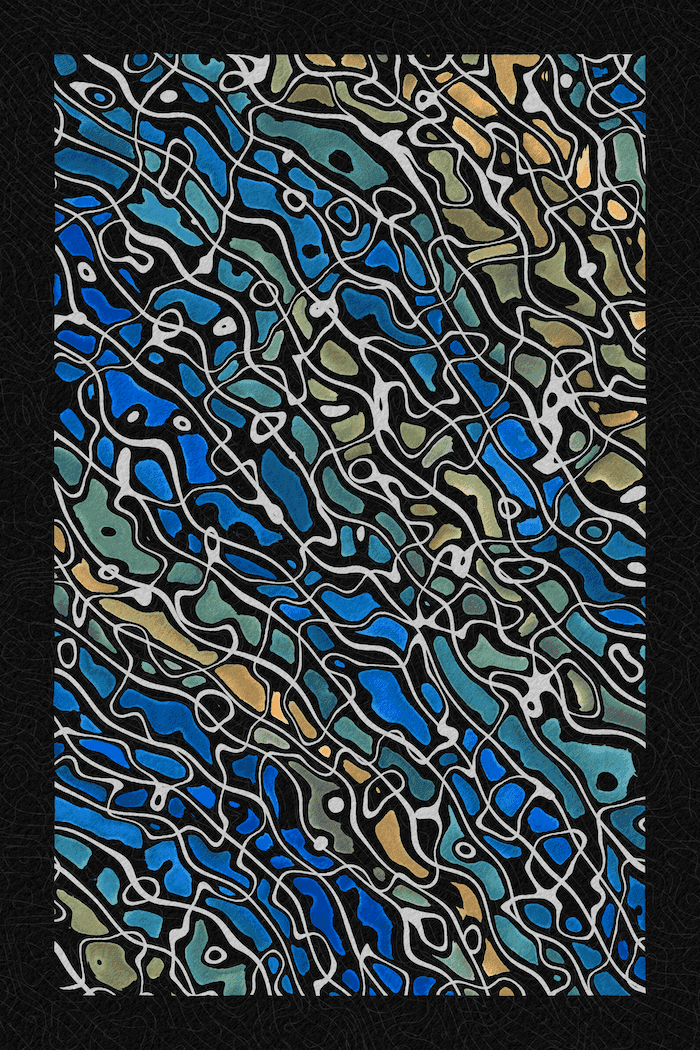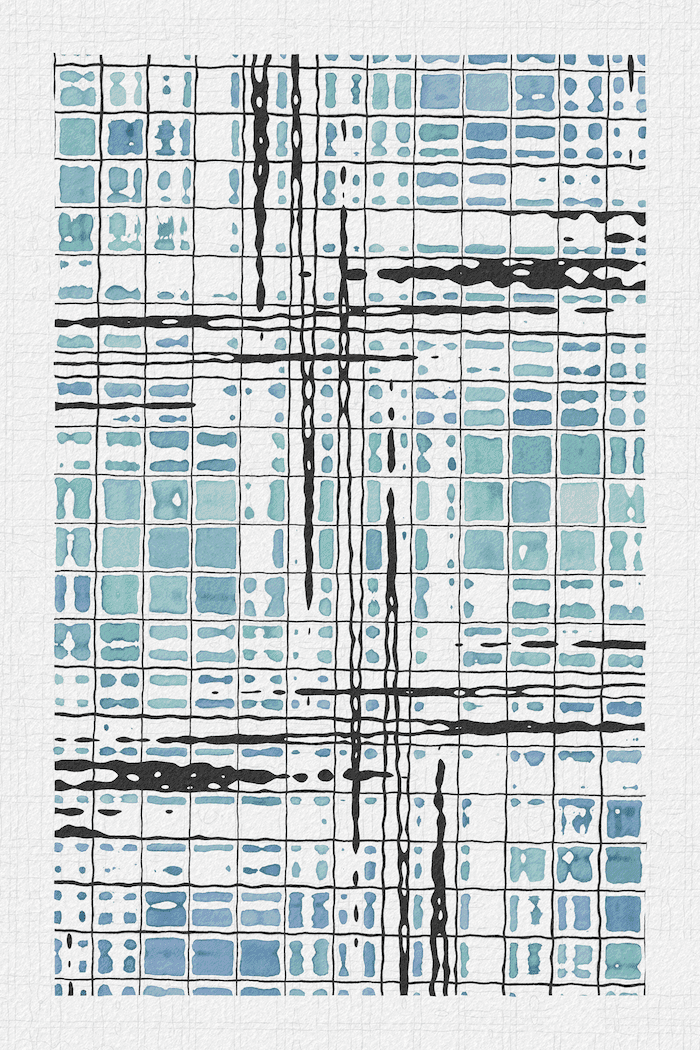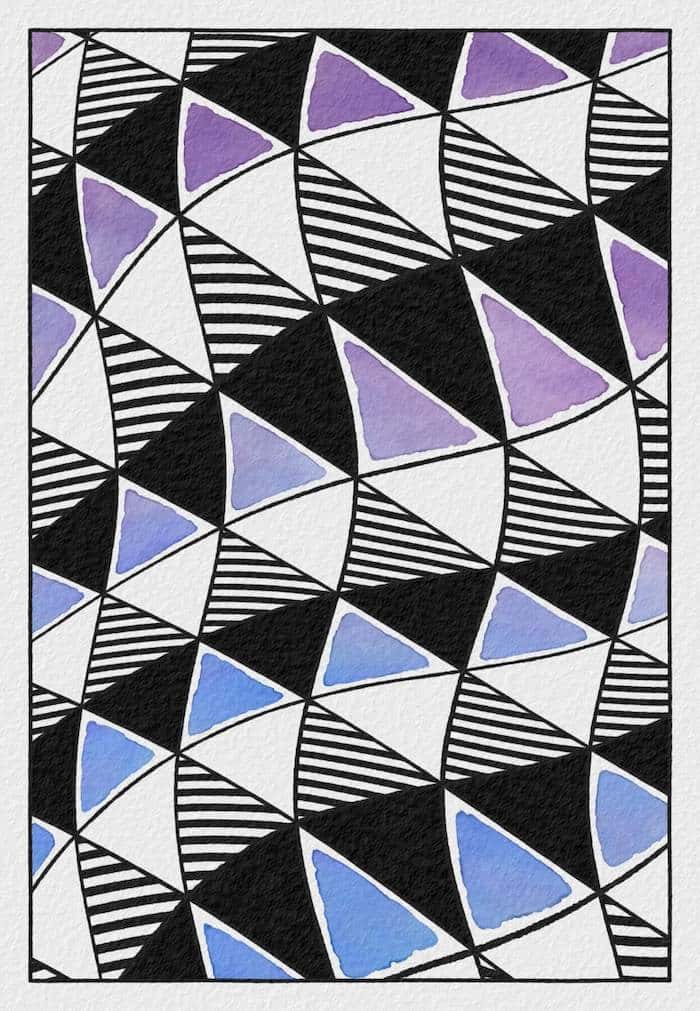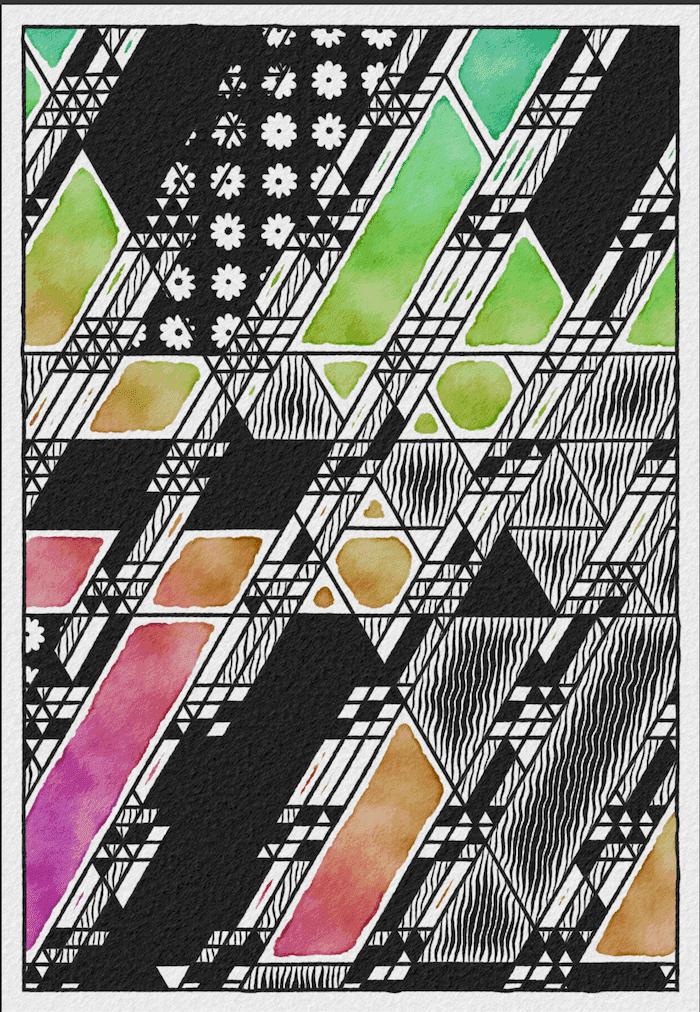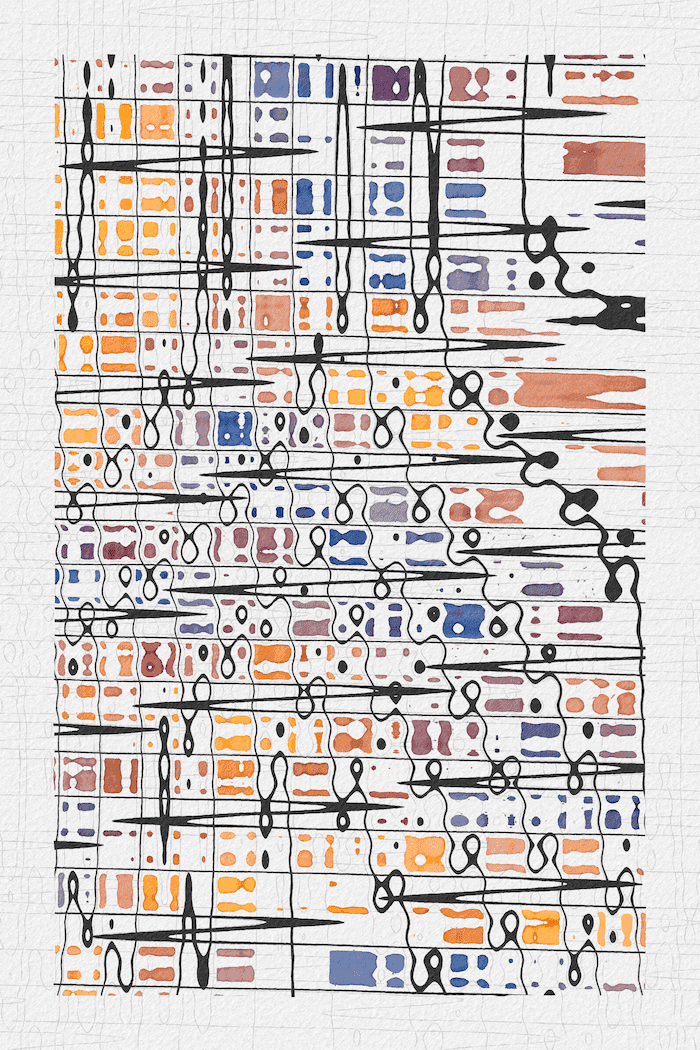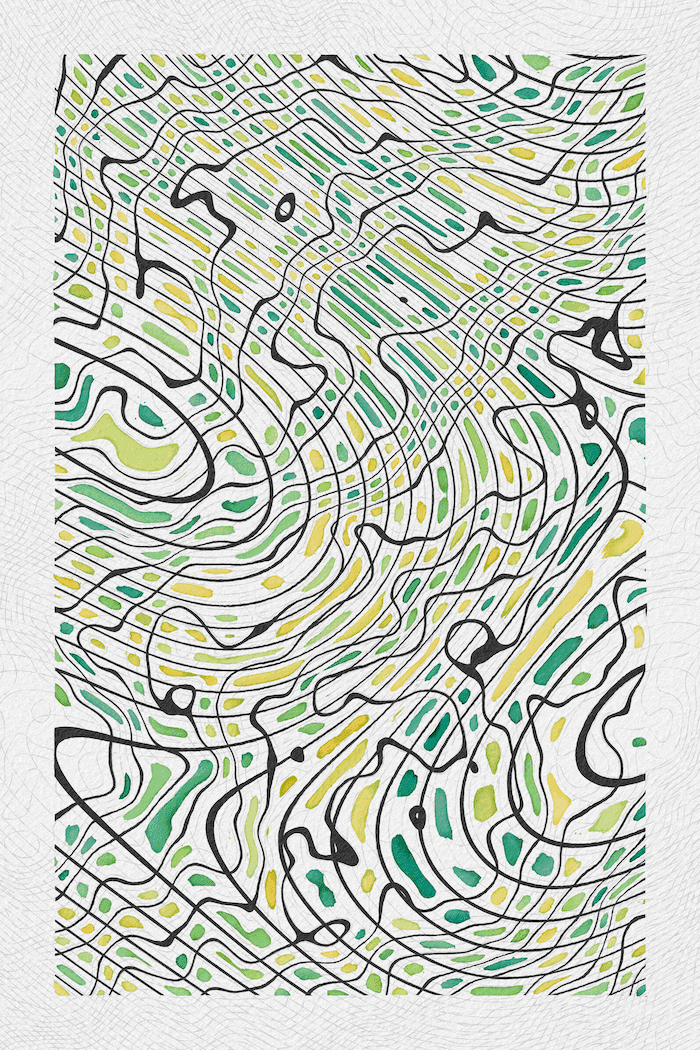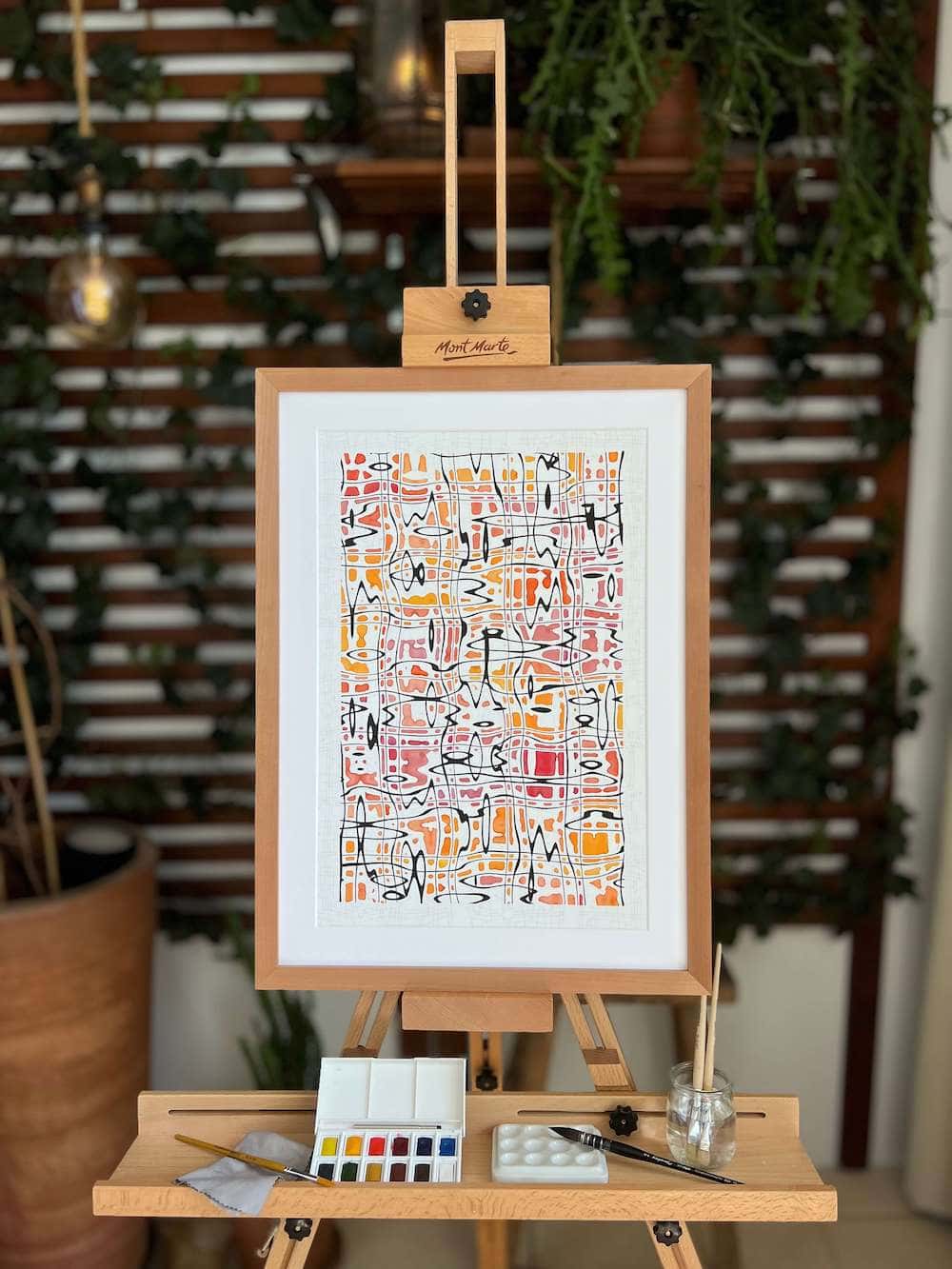The Source
An Ode to Water's Myriad States.
— By Camille Roux x Matthieu Segret
An Ode to Water’s Myriad States
Water, the source of life. Muse behind countless works of art across time; inspiring awe and wonder at its fluid and ineffable nature. We are Camille Roux and Matthieu Segret, artist friends for over fifteen years since our time studying Computer Science together in engineering school. The Source started as a project of our friendship. We aimed to have fun making a project that we’d both enjoy, using our respective skills dynamically whilst working together in person as much as possible. After a year’s work, we are proud to present The Source to you as our attempt to give outline to water’s constantly disappearing forms. Together, we will explore the potential of generative art to hold the river in its various states: from dangerous, wild force of nature, to a calm body of water that soothes and relaxes. As a generative art project, The Source delves into the potential of humans to use machines to create organic and authentic art, emphasising the intricate dynamics of water and the varied textures of watercolour, ink and pencil strokes. At the heart of this project is a creative paradox: an algorithmic code which seeks to emulate the organic decisions of the artist’s painting hand.
En Plein Code
Impressionism flourished from the 1860s with the revelation of the artist painting en plein air: within the same landscape, fresh air and sunlight being captured on the canvas. The rapid and spontaneous physical act of capturing ‘on the spot’ the fluid dynamics of water and its interplay with shifting sunlight produced representations of water suffused with the bodily and emotional impressions of the artist. The Source’s primary innovation is its rendering of a watercolour texture which may perform our perceptions of the essence of water. Although expressed in mathematics and written in code, the texture is the product of months of dedicated reflection and refinement, trial and error. We worked on this source code together in person, in the presence of seas and rivers for inspiration, and with the camaraderie of years of friendship and collaboration. Through this labour; in the focusing on minute detail, and enabling of distortions towards a realistic texture, we feel that The Source represents an authentically human form of digital generative art. For although this code has been prepared in advance, as long-form generative art its contract will mint hundreds of spontaneous and serendipitous responses to the act of painting the ephemeral beauty of water. Whilst also paying homage to the heritage of the watercolour medium, each output is thus a form of contemporary meta-art: an expression of the expression of painting water.
Origin Story
"It is pleasant to have been to a place the way a river went."
Henry David Thoreau
It’s July 2022; a brainstorming session in a house somewhere deep in the Pyrenees. Seeds of discussion begin to germinate: ‘What if we make mosaics, but with a watercolour texture?’. Matthieu warms to the notion as a lover of textures and tactile aesthetics. In turn, Camille is excited by the prospect of using triangular grids, and a mathematical sensibility. Cue hours upon hours of research into arcane topics with titles like "Euclidean tilings by convex regular polygons". Here was the start of our quest to create watercolour textures inside triangular shapes in p5.js, using a special way of solving problems called a recursive algorithm.
Sea Changes
Soon after, the mosaic idea was discarded because it was too technically challenging. However, we stuck with the triangular grid and chose to use it to draw isometric channels.
By November 2022, we were having trouble getting a satisfying composition with the channels, so we decided to abandon them. A new idea surfaced: watercolour grids drawn with ink borders. As we also sought to improve the watercolour texture itself- particularly to darken the edges- we introduced GLSL code (also known as shaders, a programming language for graphic cards). At this point, we were both beginners in shaders. As we gained more skills, shaders became a larger part of our project, opening up lots of new, exciting possibilities. A big thanks to Piter Pasma who regularly answered our questions about shaders (and SDF for those in the know!). By December, we had gradually rewritten the entire project using shaders.
Final stages: Euphoria and Doubt in Waves
Waves, our code name for the nascent project, was born out of several domain warpings that we couldn't fully control. Even though we occasionally achieved beautiful outcomes, most of the results didn't satisfy us. Fearing that we wouldn't be able to manage the project and have enough entropy, we pragmatically decided to explore a new path: geometric grids with patterns drawn in ink or white ‘felt-tip’. For several weeks, we dug into this new direction. Despite some interesting results, in January ‘23, we decided to give ‘Waves’ another shot. We dived back into the algorithm to get more consistent results. At the same time, we began testing new domain warping techniques. By February, we started to feel good about the fundamental form of the project and decided it was time to focus on the details: the colours, the palettes, pencil sketches, spots, and the domain warpings.
Palettes, Warps, and Sea Views
In March 2023 we met twice for a week in an Airbnb with a sea view, close to where we live. Inspired by the view, we continued exploring colour palettes, domain warping, and various other details, using MIDI and an iPad to test colour palettes more quickly.
We selected fifteen colour palettes whose hues are inspired by, and named after, famous rivers of the world. This homage to natural waterways aims to imbue each piece with a sense of place, culture and environment. Beyond this, as generative art, the project allows us to imagine different iterations of these famous waters, incorporating fourteen different water states; from ‘icy’ and ‘still’ through to ‘whirling’ and ‘chaotic’. In The Source, The Nile may frost over, and the Amazon whirl chaotic.
Animation
"Equations for falling water. The streaming motion.
The balance-sheet of energy that flows
passing along its infinite barrier... "
from ‘The Dam’, Muriel Rukeyser
The animated building process in The Source is designed to engage the viewer in a reinterpretation of a timelapse of the painting process. Each unique animation connects the viewer to the meditative performance in which blank canvas becomes realised work of art:
Technical Process
1. The first step in the building process is generating the Signed Distance Function (SDF) of a grid. This SDF provides us with the distance to the nearest boundary.
2. The second step involves deforming this grid using domain warping techniques, utilising a combination of noises and mathematical formulas, adding a touch of complexity and organic charm to the artwork.
3. To create the paper texture, we generate a 3D surface using value noise algorithms. Then we apply lighting effects that interact with the surface, creating shadows that mimic the interaction of light on textured paper.
4. Using the SDF, we can precisely determine where to draw the pencil and ink lines on the artwork. For instance, the ink lines are drawn near the boundaries of the deformed grid, where the SDF values are close to 0.
5. The final step involves rendering the watercolour brushstrokes, still relying on the information provided by the SDF. The watercolour texture dynamically evolves according to the distance to the boundaries and its position.
Traits
| Palette | St. Lawrence|Mississippi|Danube|Paraná|Amazon|Mekong|Rhine|Rhone|Yangtze|Volga|Murray|Ganges|Nile|Lez|Congo|Yoshino|Rio Negro |
|---|---|
| State | Agitated|Still|Stirred|Powerful|Torrential|Wavy|Frozen|Melting|Icy|Splashed|Frosty|Whirling|Cascading|Chaotic |
| Pencil | 6H|2H|HB |
| Erased Pencil | Mostly|Slightly|Untouched |
| Paper Color | Black, White |
Prints
From the very beginning, our goal has been to ensure that the printed versions of The Source exhibit a realistic appearance. After numerous tests and experiments, we have achieved print results that have impressed even experienced watercolour artists. We highly value the physical dimension of generative art. We'd be delighted if prints of The Source were displayed in apartments, exhibitions, museums... and if viewers were to enjoy them as much as we do. To this end, we've made sure that you can print your pieces in the best possible conditions:
- Press the p key for export dedicated to print (no paper texture and enhanced black contrast). We recommend increasing saturation by 10%.
- The Source should be printed with a fine art printer (like the Epson P900) on Hahnemühle German Etching 310 g/m² paper with a minimum resolution of 300dpi.
We'll be launching a premium-quality print offer, with certificate of authenticity, for collectors, for a rendering faithful to our vision.
A Collaboration
The Source is also the story of our friendship. Of Matthieu, who loves to paint watercolours and has a connection to the physical side of art, and Camille, who is fascinated by mathematics and shaders. Together, we have combined our passions to bring this series to life. We're incredibly grateful for your support and excitement. It's thrilling to imagine how you will engage with "The Source" and we sincerely hope it brings you as much joy as it brought us during its creation.
Charity
5% of proceeds will be donated to Oceana via Endaoment.
Camille Roux and Matthieu Segret
with Yorks @generativepoet
